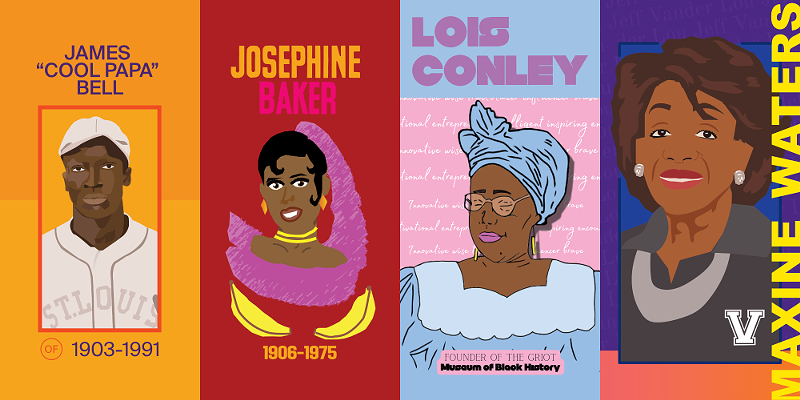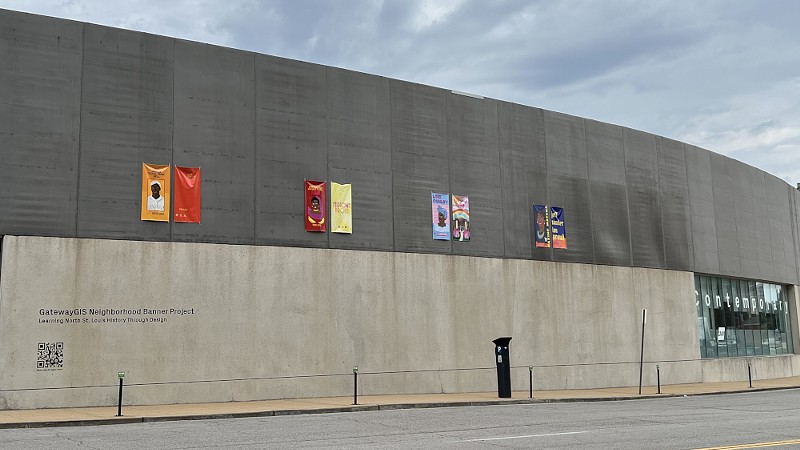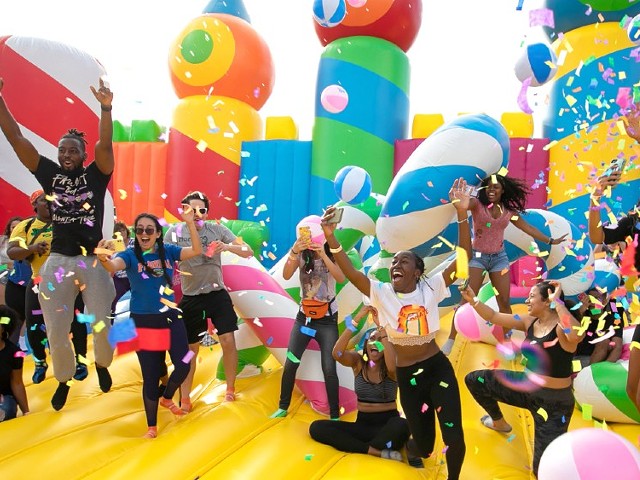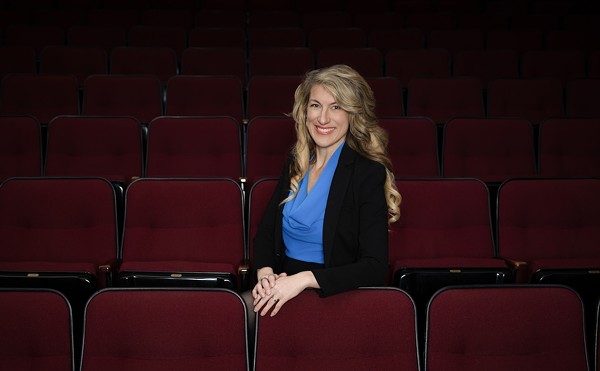
Courtsey Contemporary Art Museum
The GatewayGIS Neighborhood Banner Project: Learning North St. Louis History Through Design explores the intersection of art and technology through graphic design.
A series of eight vibrant banners hang along the west facade of the Contemporary Arts Museum (3750 Washington Avenue, 314-535-4660) along North Spring Avenue. Each pair of banners honors a St. Louis hero as well as the neighborhood he or she hails from.
There’s James “Cool Papa” Bell, a star pitcher for the Negro National League from JeffVanderLou; singer and dancer Josephine Baker of midtown; Lois Conley, founder and CEO of the Griot Museum of Black History and St. Louis Place resident; and Congresswoman Maxine Waters, who went to Vashon High School in JeffVanderLou before going on to become the most senior African American woman in Congress.
The banners are an effort of GatewayGIS, an educational organization launched in 2019, to familiarize North St. Louis students with STEAM. The GatewayGIS Neighborhood Banner Project: Learning North St. Louis History Through Design does so by exploring the intersection of art and technology through graphic design.
The project, which will be on display through September 18, is the culmination of almost two years of planning and collaboration between GatewayGIS and the Contemporary Art Museum’s education team. It was the brainchild of Rosalind Norman, founder of Gateway GIS, which has a mission of using geospatial and other technology to foster community building, education and other development for those who are under-resourced or underrepresented.
The project seeks to elevate and celebrate African American leaders and neighborhoods while exposing St. Louis children and teens to the art of digital graphic design. A resident teaching artist assisted in the creation of each banner, helping the students execute their visions and teaching them how to use the design software. However, the kids took the reigns on everything from researching the history of their subjects to the shading of their subjects’ faces.
“They were the creative directors,” says Kevin McCoy, one of the resident teaching artists. “They really did craft it to make sure that it looked exactly the way that they intended.” McCoy worked with the Herbert Hoover Boys and Girls Club to design the James “Cool Papa” Bell banner, which was modeled after a vintage baseball card.
Norman created GatewayGIS largely in response to the advent of a new National Geospatial Intelligence Agency campus in the JeffVanderLou neighborhood, where she grew up. She feared an influx of technologically skilled workers would price residents out of their neighborhood. She was at once heartbroken for her community and compelled to help it, resolving to create a space where North St. Louis students could learn the technological skills missing from their educations.
With this specific project, Norman hopes to demonstrate how arts and technology can work together to ignite a sense of hope and possibility among participating students. She hopes those students can serve as positive role models for the children who come after them, as well as inspirations for the broader community.
During the research process, many students found it difficult to gather sufficient information on their subjects, despite their vast accomplishments. To Norman, this only further demonstrates the lack of representation available to students in North St. Louis and the necessity of endeavors such as these.
McCoy echoed this sentiment.
“I used to go to a museum when I was younger, and the art that I found [on the walls] did not represent my lived experience,” McCoy says. “To celebrate someone that looks like you, maybe someone that's from the same city that you're from, that’s from the neighborhood that you're from – that's a big deal.”
When summarizing the goal of this project, Norman brought up a saying told to her by a friend at CAM: “Ellos intentaron enterrarnos. Ellos no sabían que éramos semillas.” (“They tried to bury us. They didn’t know we were seeds.”)
“When you strip people of who they are and their heroes, you’re burying them,” Norman says. “It’s so important that we not allow communities of color to be wiped away. Let’s help the seeds to develop so people can see the beauty of who they are.”







